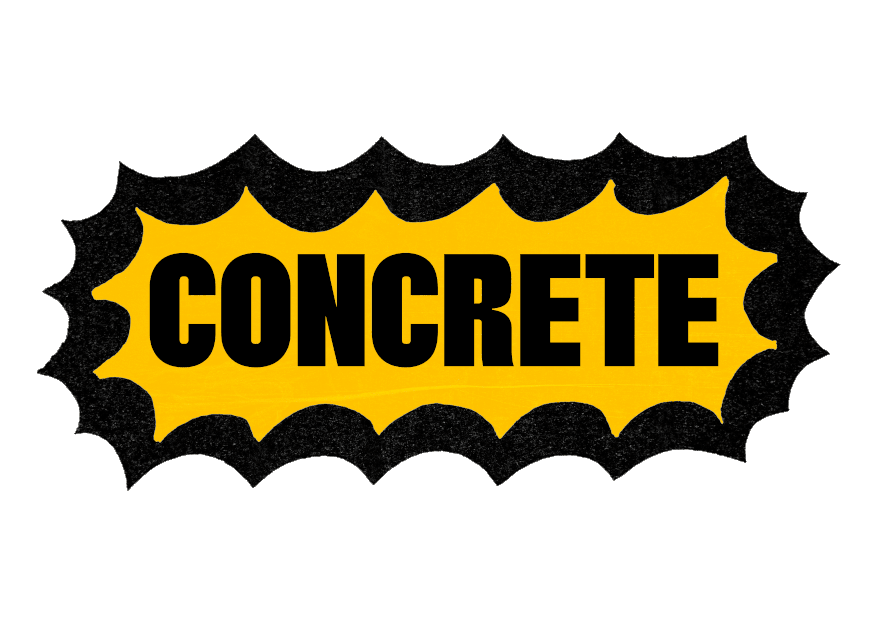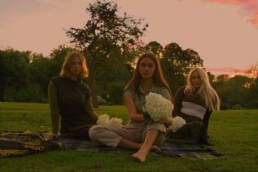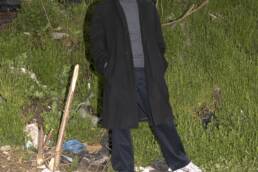CONCRETE meets the team behind Dance Policy – the Mancunian photojournalism zine documenting youth and music culture in the UK. Unlike other photography archives of similar content, Dance Policy’s founder, Zak, explains why he is more interested in the forgotten and the present than old stories about the Hacienda, and illustrator Jamie tells us how he came up with the zine’s gorgeous dancing fool.
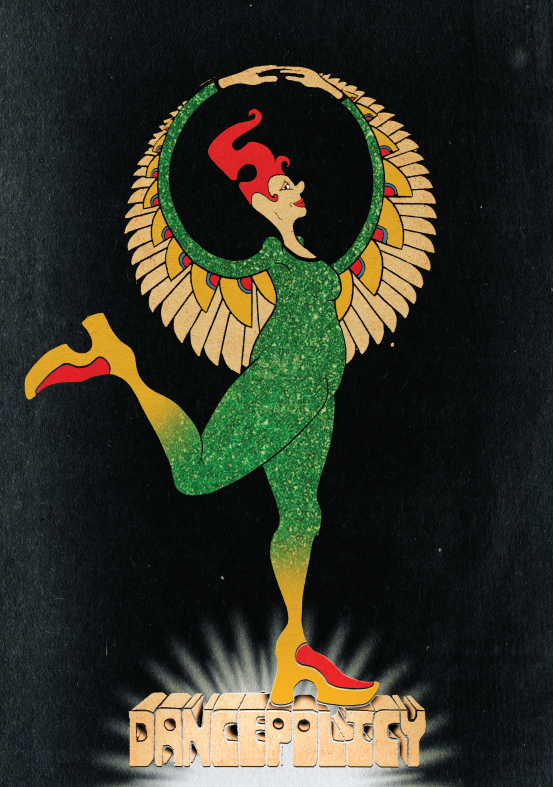
Dance Policy issue 05
How would you explain Dance Policy to a person in the street?
Z: Dance Policy is interested in youth and music culture through photojournalism, but also moves beyond the meta narratives of traditional music journalism. “A gentler revolution in music journalism” is the motto, because that’s exactly what it is, no overhype or interviewing the biggest names. I interview, showcase, and platform people who I believe are talented – that’s it. Dance Policy is a platform where I can connect one talented person to another place. I believe I thrive in platforming and facilitating other people’s talents. I guess I also just really like photography.
What do you want to say with your work?
Z: The subtleties of music are wrapped in so many different narratives across the world. I want the photos to speak for themselves, letting the viewer feel connected with the type of music they love, whether it’s punk music or dance music. I want my work to be representative of the music scene and make exploring it easier by providing a helping hand to those who are traditionally overlooked by smaller magazines/publications. Basically, to end gatekeeping; because that’s the opposite of what music is about, right? Those moments in a dark and wet room are there to be shared. You connect the dots. That’s why I focus on giving a platform to lesser known DJs, especially in the Manchester area.
How has your background influenced your work?
Z: I acknowledge that having the time to start a magazine single handedly is a privilege, but I suppose everyone who came before me influenced my work. I come from a family of makers, hands-on people, and problem solvers. It’s a shame it took me to get a Masters in a completely irrelevant and uncreative area in order to realise this, but I’m much happier now. I guess my past degrees helped me in networking, organising, planning, and running Dance Policy. I don’t particularly regret it – education is never a waste of time. In terms of proper inspiration, I follow some archive pages and organisations like the Museum of Youth Culture and such. The only difference for me is that I’m not interested in being an institution, or some monolithic organisation. It leads to a lot of gatekeeping and stalls creativity. That’s why Dance Policy will always need to be a solo project.
How did Dance Policy start and when?
Z: It started after I left a rather large radio station in 2019 and I was feeling a bit lost. I remember I wanted something of my own where I could have full creative control. I originally wanted to do promoting, so parties and such, but realised I couldn’t contribute something that original nor had the passion for it. The day you stop doing things because other people are doing it is when you become your most creative. After giving up on promoting I made Dance Policy into a magazine/website. I’m a big believer in sticking to your own talents and knowing your limits. In 2019 I was at a crossroads as I could either team up with a few other people and risk it eventually fizzling out – which is a common problem with collectives – or, run it myself with full creative control but take on the workload of 2-3 other people. I chose the second one. Dance Policy is a slow burner but it’s slowly becoming what I envisioned after nearly 2 years of work.
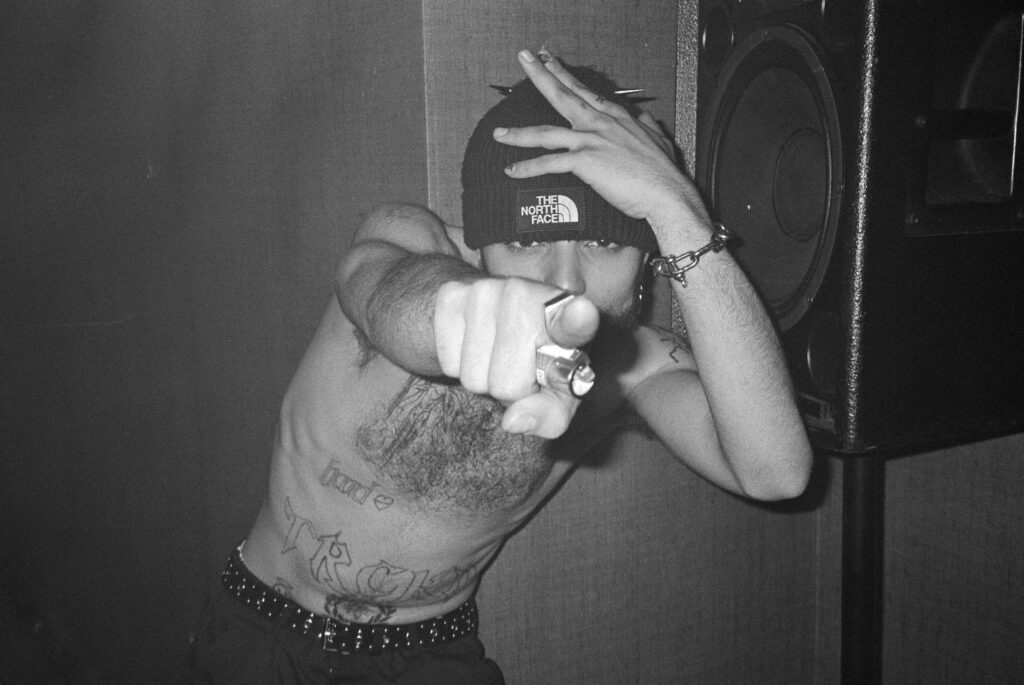
image by Noemie, @princessvoiture, for Dance Policy
What type of images do you want to see submitted?
Z: That’s difficult. Subject wise, I like photos that are more than just a crowd at a party – which I think other archive pages that do something similar to me get stuck on. You can only post the same old photo of a crowd so many times. Photos from music scenes across the world are not seen on these pages as much, but they are just as interesting to Dance Policy’s readers. For example, punk aesthetics is really popular in Myanmar and there are some great photos out there. I suppose I just really like close up photography of people in random situations – and dance music/youth culture provides a lot of that. I’m also heavily interested in streetwear and fashion, so anything that provides a unique twist on that is compelling. Speaking about composition though, I’m interested in how light interacts with crowds and people. There’s some photos of raves in warehouses in broad daylight with the light coming through the cracks in the ceiling; they’re really beautiful. I’d like to see more of that.
What draws you to youth culture?
Z: Again, mostly the fashion, expression and such. I come from an area of the West Midlands which is culturally very conservative. And whilst I’m fortunate enough to have very liberal parents, I always felt scared or embarrassed to be myself. My experience of the small town mindset has put people who aren’t afraid to express themselves as who they truly are close to my heart. It’s really brave of people who present themselves via what they wear, listen to and like to say “Yeah, this is me.” I couldn’t do that for a long time – I’m probably still working on that myself.
What’s the relationship between dance culture and art to you?
Z: There’s so many elements. Dance culture has a rich history of different art forms amalgamating to make something new. Every genre – and I mean every genre – was previously influenced by one that precipitated it.
What is the ‘Dance Policy’?
Z: The ‘policy’ of Dance Policy is about bridging the gap between a club and the local community, and to get as many people involved as possible. I’m questioning that; why can’t a club also put on events in the daytime? Why can’t clubs be part of the local community? I mean, there’s only so many luxury flats you can build before you’ve completely destroyed any sense of purpose we may have outside of work. I want us to realise this so we can stop knocking down clubs, because the more you stigmatise them the more dangerous they get. The name… well… I suppose the name came from this feeling that we police music about what’s cool and what isn’t. I have always felt that people think you can only find something cool if big media outlets are talking about it. I really dislike that concept; we should like something because we like it, that’s it. So the name is ironic in some way. As I’m saying “yes this is what I think is cool,” but also highlighting so much of the bullshit that is in music journalism. The gatekeeping, the decision to only play this “particular” music, all that stuff. I’ve spent too much of my life listening to other people tell me what I can or can’t do, and I’m not going to be that person for other people. If you like it, you like it. Own it. Stop policing what other people like.
How political is your work?
Z: Dance Policy is political in the sense that I don’t want to suppress problems in the scene – I want to highlight them. So I often talk to people about what they love and hate about DJing, the complexities and problems facing dance music right now, and where it’s going to go next. Everything is political. Your very existence is political, although some more than others.
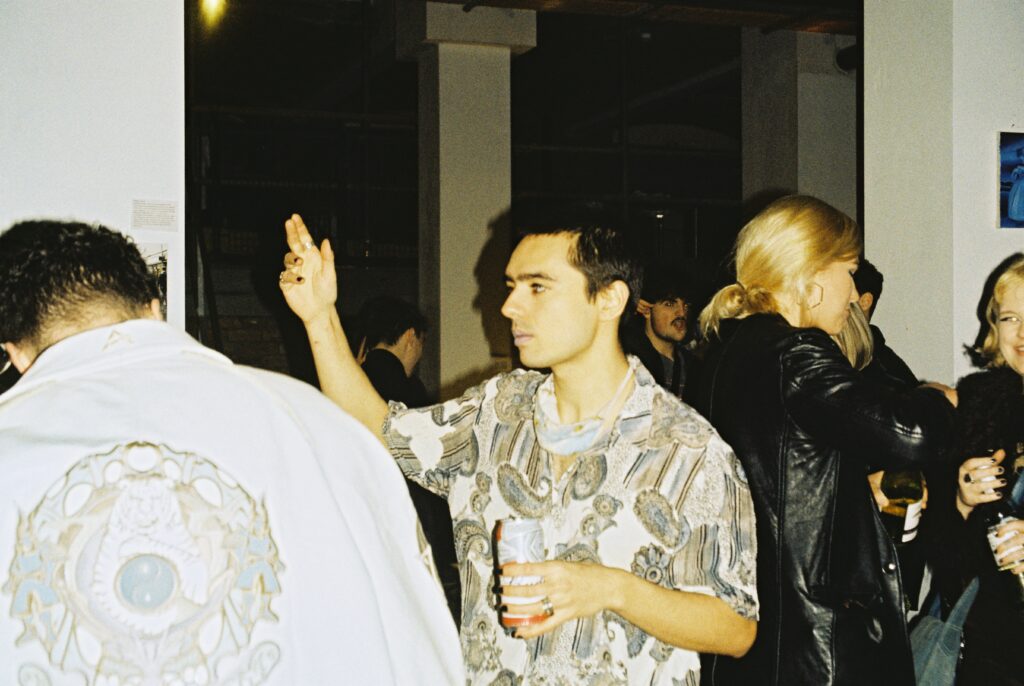
Image by Zak
As the primary site of production, how important is Manchester as a place to what you do?
Z: Manchester is where I’m supposed to be. I had a funny relationship with London and it took me a while to figure that out. Manchester is open, forgiving, and humble. Manchester is Dance Policy’s home – I couldn’t move it anywhere else.
Why is having a 3D item (the zine) important?
Z: Because photos are more than just an instagram post. I like the concept of having something physical; every release is a little time capsule of photography. I think with every layer you add to a moment, something is lost. Experiencing a moment is better than a photo, and a physical photo is better than a digital photo on the internet, and so on and so on. I think there’s something really valuable in being able to experience and possess something physically. It’s probably why Generation Z likes going back to film cameras, vinyl and cassettes. I could probably be more successful if I put more effort into the Dance Policy website rather than the magazine, but there’s a lot more to it than just status and clout.
What is the process for selecting written work for the zine?
Z: I’m not too picky, I would like someone who can write coherently but that’s about it. *laughs* My only constraint is paying writers. I’m trying hard to get to a level where I can pay everyone involved with Dance Policy. It’s hovering at about 70% of people at the moment. I’m yet to pay myself. I like work that is more than the wall of text that I see in so many magazine publications. Sometimes I see pages and pages on a music review, and I just don’t give a shit – and I make content about the same things! I’m skeptical of the whole idea of music reviews anyway. Why post some arbitrary review of a song, when you can talk about some obscure music soundtrack from a game you loved as a kid? That’s exactly what I’m about. *laughs*
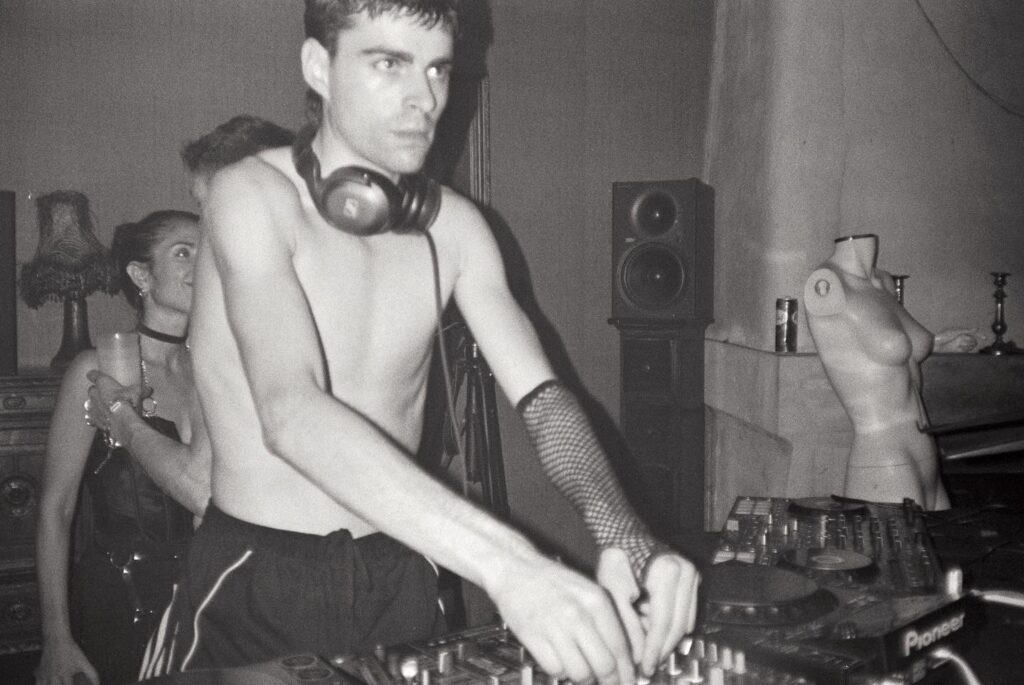
image by Noemie
There are good clubs and good DJs and there are bad clubs and bad DJs. Dance Policy isn’t just a roll call of every club and DJ in the world. What type of people and groups do you seek out?
Z: Manchester isn’t perfect. I’ve met plenty of people who I know are disingenuous. It’s quite upsetting but I’m not going to go after them for it. I’m not here to run Dance Policy as a negative campaign, but instead as a positive one that tries to make changes. Whether or not I have or will is for the future to decide I suppose. That’s why I choose not to associate my name with it too much. It’s not about me. The people I respect the most are the ones who do the most outside of music. I seek clubs and DJs that go beyond the music. Charlie Dark, for example, does Run Dem Crew which seeks to get communities together to run. He’s enthusiastic about getting the youth involved with music, and overall just a really nice guy. Those are the types of people I want involved with Dance Policy. I don’t care for this gatekeeping some established magazines do which dictates what is ‘cool’ and what isn’t. Like I said, magazines should be providing ladders to people, not kicking it from beneath them. Basically, I’m just interested in people who do good shit, help others be part of it, and have fun whilst they do it.
The opening text to issue 3, 4 and 5 (all of them?) feature this text. Who wrote this? Can you talk a little more about it? What role does it serve the zine?
inwards concealing the dark. The lovers of dance and night
reveal themselves. We race against the sun’s soon felt fury
as it focuses upon us again, waiting for its gaze to move
beyond and cast us into what we understand one more time.
Z: I wrote it. It’s at the beginning of every issue, I write poetry privately sometimes. I write a lot of things without really knowing the meaning, that or it changes over time. Essentially It’s just about encouraging people to be their most authentic selves, which I believe night time seems to encourage a lot. Then, within a few hours, we revert back to our normal lives where we pretend to be something we’re not. Or maybe its the other way around? It’s not up to me to say.
Why did you accept and include poetry submissions in issue 5?
Z: I figured, why not put it in? They’re very much a reflection of a moment I feel throughout life and also connect with the name of each issue, for example, the next issue will be called You Make Me Nervous. I often get asked what each one means but I won’t ever give you a firm answer. You have to figure it out yourself. I have guest poems from other people like Zachary Knowland or Lyddie Mac – who runs Observer’s Paradox – who are very talented poets.
There appears to be a Romanticism to Dance Policy. Text in Dance Policy zines include many references to the natural world, including flowers, and repeated mention of the Sun and Moon. Does it link to the energy and vitality of the photographers of clubbers which form the bulk of Dance Policy images?
Z: You know, I never really noticed that I talk about the sun and moon so much. It just feels like an unrecognised aspect of dance culture. In the night time people seem to feel their most free. For some people it’s not so easy to be “free” on a night out. In the daytime we’re forced to put on our silly little suits and go back to our jobs and pretend, for most of us, to be something we’re not. I think Romanticism has a very recurring role as the magazine came out in lockdown. I wanted people to be reminded of happy memories and that one day they will come back. And they did! I guess the natural world mentions how eventually balance will be restored, hopefully, in the world.
The excitement of clubs reopening after a year of Covid-19 has now – to me – reached a sustained point in Britain as normality has more or less returned (touch wood). With a return to normality in mind, what new things in dance, club and youth culture are you seeing? Where might this take us?
Z: Errrm nothing that new. *laughs* After 2020, there was a lot of needed self reflection about who we want to be and what we’re doing. I was hoping to see more representation and uplifting once the clubs reopened, and I did see some! But it was by people already doing great work! For example, Partisan Collective. I went to an event run by All Hands On Deck and they put on a load of DJs around the north who are new-ish and from unrepresented backgrounds. They all smashed it! I had a great time. The White Hotel continues to be amazing. I’ve seen them putting on more events from LGBTQ+ collectives, which is great. The management there is golden. But then the big festivals/places, like The Warehouse Project, remained kind of all the same. I mean maybe a few names changed, but it’s still an absolute sap on the community. I don’t ever see them doing anything to uplift people around Manchester, nothing that has made an everlasting impact anyway. I want more community work, I want more people coming together to create things, I want more uplifting! Of course, I am guilty of not doing enough, but I’m trying to figure out more ways I can help get the right people into the Manchester scene. I’m yet to fully complete any of those plans, so I do need to try harder.
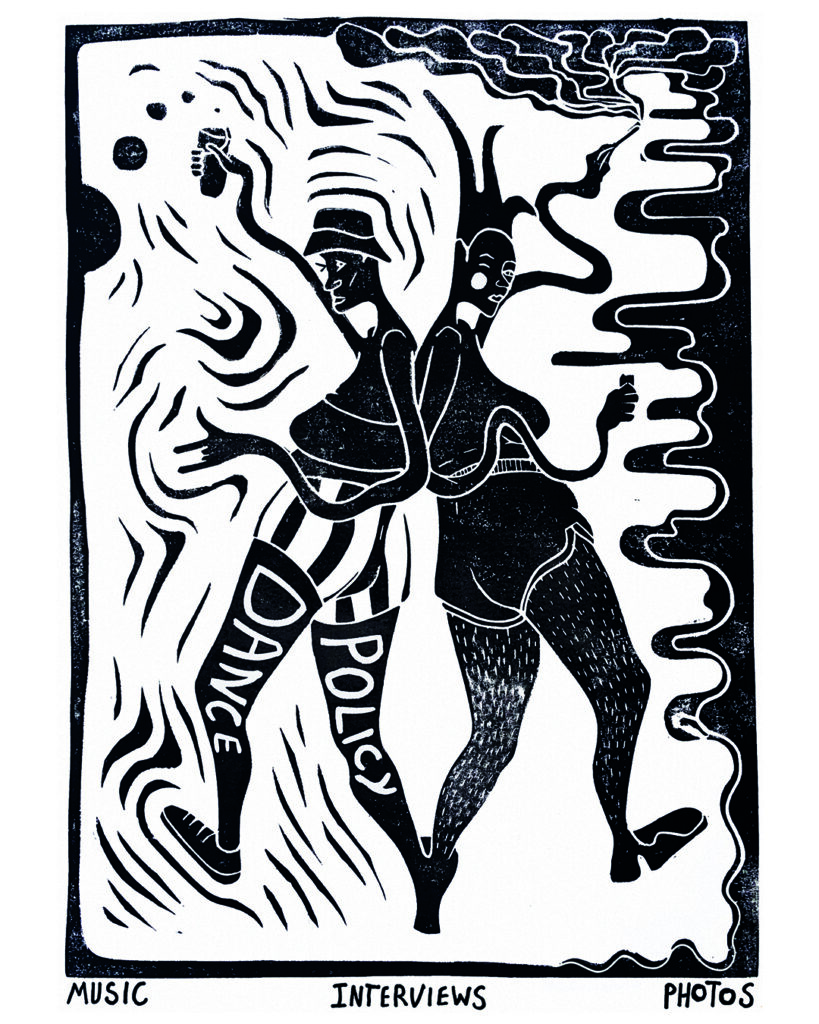
Dance Policy issue 02
Jamie, what’s your process for designing the zine’s art?
J: All the covers I’ve made for Dance Policy are digitally altered lino prints. It usually starts with the worst drawing in the world which I tweak and redraw with tracing paper until its salmon smooth. Once the design is finalised I flip the paper and imprint it onto the lino and cut it: that way also means it won’t be reversed when it’s printed. Once that’s done I edit it to varying degrees on Photoshop – colouring or fixing bits.
When designing the zine, who are you drawing references from for the art?
J: It changes every issue. Style-wise, I’m very much into Art Nouveau posters and the psychedelic gig posters and album covers of the late 60s that basically remixed them… those kinds of inspirations feel deeply embedded. Zak often sends me something new every issue to look at to flavour the next cover and they’re always wildly different each time. I tend to get obsessive about the details and like to have things linked or interwoven by blobby tendrils. As for the Dancing Fool, they’ve had many inspirations, there’s a bit of Bart Simpson in there, maybe some kind of chicken? And more recently, a dribble of Liza Minnelli as they’ve been getting more sparkly. I’d be lying if I said Jake from Adventure Time wasn’t an inspiration for their elastic arms. I usually get a friend to do a reference pose to work out how the fool or any other character will look on the cover.
Who makes good art?
J: I’d say Jason Galea, HR Giger, Terry Gilliam. Eve Gittins is pretty great. I find animated films the most inspiring art form, and its usually just the little details and effect animations such as the black worms at the beginning of ‘Princess Mononoke’ or the boots the Blue Meanies are wearing in Yellow Submarine. Come to think of it, all the boots in Yellow Submarine are incredible art themselves, so whoever designed those, George Dunning maybe. But the black worms trump the boots.
Which current trends in art are you keeping an eye on, if any?
J: Not many I must say. I tend not to like trends I notice in current illustration but I’ve been a bit ignorant recently with working in bars so much.
Z: Same for me. I come from a very non-art background in terms of illustration, which is the reason why Dance Policy looks so unique I suppose. Jamie and I aren’t interested in being “like” someone else, we’re interested in being ourselves. But photography is an art in itself I suppose. I’ve been keeping my eye on Punk photography a lot recently as it seems to be creeping back just a tiny bit. I think punks offer some of the most interesting music photography.

Image by Zak
What’s on the horizon for Dance Policy?
Z: I make very little from this at the moment, so I’m trying to figure out ways of optimising it. Like I said earlier, there’s only so many times you can post the same old photo of a sweaty crowd in a warehouse. I think archive pages who do something similar to me can become stagnant. I’m looking to venture out more, I’m keeping the photographs as a foundation for Dance Policy, but I want to engage with the community more. Starting putting on talks between DJs and artists, put on exhibitions, streaming events, and who knows what else! I’m a one man army. There’s only so much I can do while I wait for this “project” to snowball.
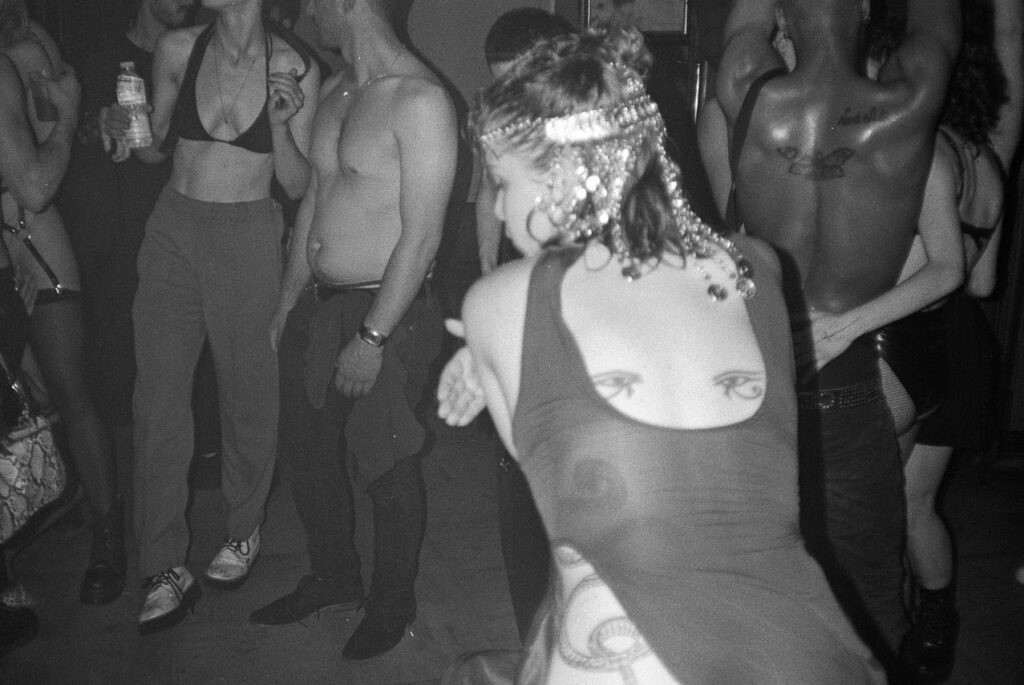
Image by Noemie
What makes you feel accomplished?
Z: Feeling like I’m making a difference. Feeling like I’m doing something unique, and using my own talents to their best ability. Knowing I’m going at least somewhere, in a direction. Many people around me are doing very different things with their lives; I’m pursuing what is right for me and other peoples’ pursuits are not for me. I don’t want a marriage and a dog and a kid right now, but a lot of people do. That’s OK, I take comfort knowing I’m doing what makes me happy even though it’s quite opposite to other people.
Do you take photos yourselves?
Z: Yes, but I don’t tend to share them as much, only with my friends usually. I do love photography a lot, though.
What’s your favourite Dance Policy photograph?
Z: Ah… I mean that’s just impossible. I physically couldn’t choose one. Check out Chris Killip’s work on documenting the anarcho-punk social space called The Station in Gateshead. It’s great stuff – Chris Killip contributed so much to photography in Britain, he was a legend.
What’s your favourite Dance Policy article?
Z: One of my writers, Kareina, is unreal. She did a great piece in Issue 05, interviewing Discostan, and its definitely my favourite article. So much vulnerability is discussed, it’s stunning. But I should say that everyone who has written for Dance Policy is really great and I owe them a lot.
If you could travel in time, where would you go?
Z: I don’t believe in the over reminiscing of the ‘good times’: I think the music scene now has never been better. People are safer and better catered for. More importantly, getting stuck in the past stalls creativity and forward movement. Perhaps an ironic comment from someone who runs an archive page, but I really want to focus on archiving the present more. But anyway, answering your question properly, I’d like to experience Thunderdome. It’s an old club in Manchester from the 80s/90s, basically an actually cool Hacienda. People talk about Hacienda too much. It sounded like a massive gatekeeping shithole. I’m not bothered by it at all, and I guarantee you we have clubs right now that are twice as good, twice as more accepting, and twice as cool. Keep your Hacienda, I don’t want it. Thunderdome in East Manchester, or The Kitchen which was in Hulme, was where the real music and people were. Unfortunately, I cannot find any decent photographs or anything from the time. Please hit me up if you have any, so mysterious!
How would you like to be remembered?
Z: As someone who wasn’t limited by other people’s perceptions. That, or not remembered at all.
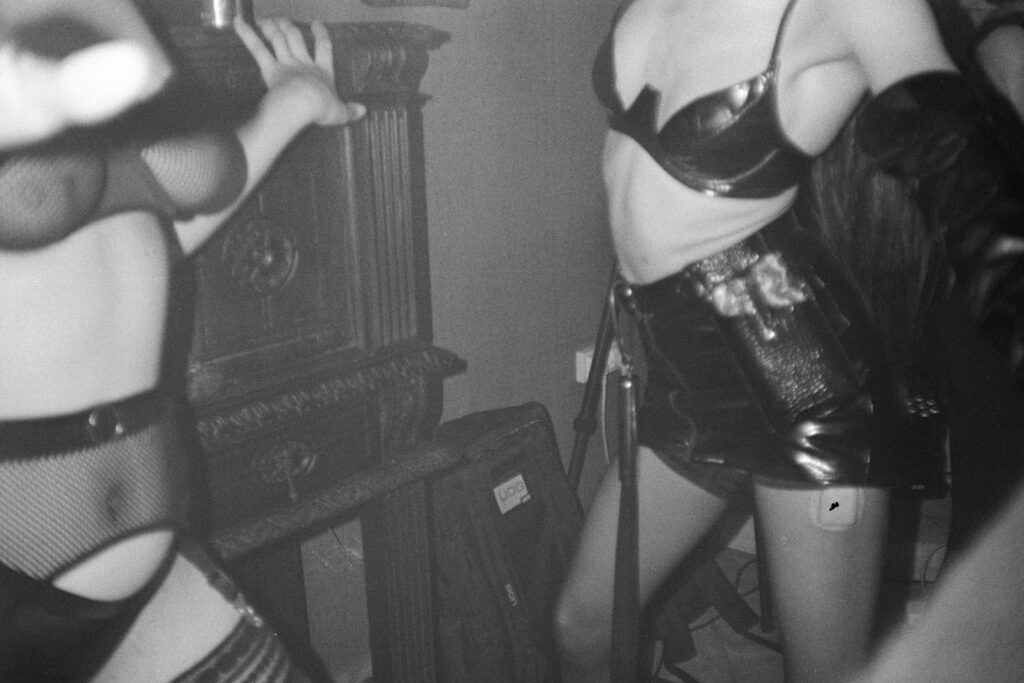
Image by Noemie
All images are property of the artists. Follow Dance Policy on Instagram here. Stay up to date with Dance Policy illustrator Jamie Brogan’s work here. Dance Policy Issue 06 You Make Me Nervous is out this April. You can buy a copy of Dance Policy here. In Manchester, you can get a Dance Policy zine at Village Books and at 20k and a Dead Sheep.
